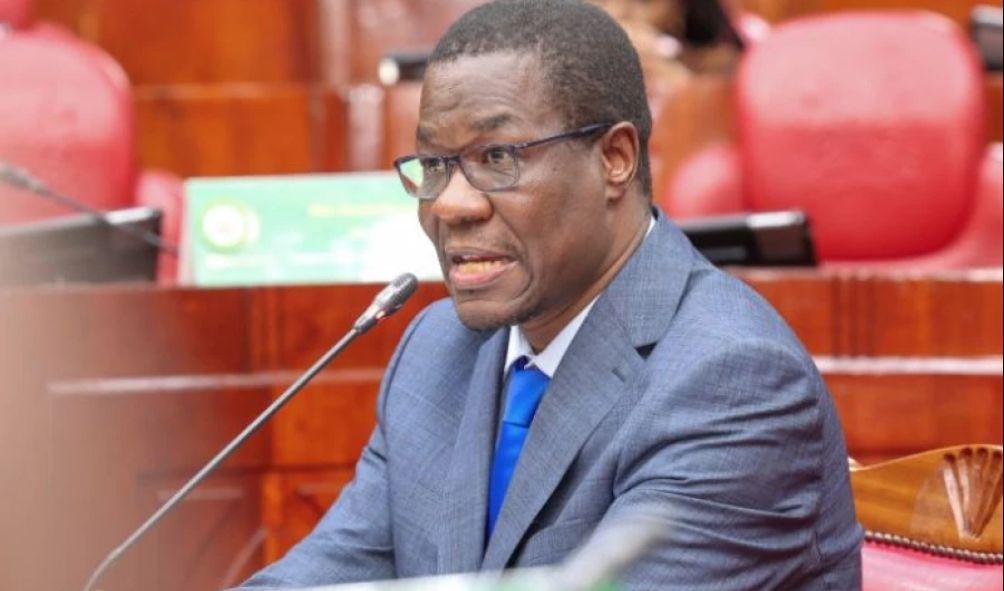Energy CS Opiyo Wandayi Details Cause of Power Blackout and Restoration Efforts
Energy and Petroleum Cabinet Secretary Opiyo Wandayi has clarified the reason behind the Friday morning power outage that impacted various parts of the country, excluding the North Rift and Western regions.
The power cut occurred just a week after the previous significant outage and less than a day after CS Wandayi had firmly pledged to minimize such incidents and introduced measures to address the sector’s challenges.
In a statement to the media, the CS revealed that the outage was triggered by a trip in the Loiyangalani transmission line as well as a similar issue with the Ethiopia-Kenya interconnector, which disrupted the grid.
“On Friday, 6th September 2024, at 8:56 am, the 220kV High Voltage Loiyangalani transmission line tripped at the Suswa substation while evacuating 288MW from the Lake Turkana Wind Power (LTWP) plant,” Wandayi explained.
“This was followed by a trip on the Ethiopia-Kenya 500kV DC interconnector, which was carrying 200MW at the time, resulting in a total loss of 488MW. Given that the total demand was 1790 MW, this loss, amounting to 27.3% of total generation, led to a cascade failure and partial grid collapse.”
The Energy Secretary further noted that the Western region remained unaffected by the outage due to the power supply through the interconnector to Tororo, Uganda.
He mentioned that restoration efforts began as soon as the outage occurred, and power was reinstated in most major cities and towns across Nairobi, Central Rift, Mt. Kenya, and North Rift regions within two hours.
These cities included Nyeri, Embu, Kirinyaga, Nanyuki, Nakuru, Naivasha, Thika, Eldoret, Kericho, Kakamega, Siaya, Busia, Vihiga, Kisumu, Bungoma, and Webuye.
ALSO READ:
- NSSF Confirms Cyber Attack Attempt But Says Member Data Is Safe
- Tanzania Still Holding Kenyan Activist Boniface Mwangi and Ugandan Journalist Agatha Atuhaire – TLS President Clarifies
- Gachagua Mourns Fr Maina- Demands Justice After Sudden Death
- High Court Tells IEBC to Clear Linda Kiome for Meru Deputy Governor Post
- Gloria Orwoba Ousted as UDA Shocks with Bungoma Replacement
“As of now, around 70% of the country has been restored, and we are expediting the restoration process for the remaining areas. We anticipate returning to normalcy by late this afternoon,” stated the CS.
“What we are experiencing today is the result of long-standing issues due to inadequate investment in energy infrastructure. The sector is exploring both short-term and long-term solutions to address these challenges, including leveraging private sector investment alongside government efforts.”
Wandayi also mentioned that the government is currently exploring four intervention strategies to prevent similar incidents in the future.
These include advocating for the lifting of the National Assembly’s moratorium on Power Purchase Agreements (PPAs).
Additional measures involve:
- Implementing base load generation projects (hydro, geothermal) to enhance energy security and provide sufficient spinning reserves. During the peak demand of 2239 MW recorded on 21st August 2024, 6MW was shed from the grid while the reserve margin was only 9MW against a required 310 MW.
- Improving grid flexibility and resilience by completing projects such as Turkwell-Ortum-Kitale (with the Turkwell-Ortum section already energized), Sondu-Ndhiwa, Nanyuki-Isiolo, Narok-Bomet, Mariakani substation, repairing the Loiyangalani-Suswa Transmission line for double circuit operation, upgrading from 220kV to 400kV, completing ground electrode for HVDC bipolar operation, and installing STATCOM for voltage regulation at Suswa and Rabai.
- Constructing alternative evacuation lines including Gilgil-Thika-Malaa-Konza 400kV to complete the Nairobi Ring and ease congestion at Suswa Complex, Rongai-Keringet-Chemosit to relieve congestion on Kisumu-Muhoroni-Chemosit, and Menengai-Olkalao-Rumuruti to provide geothermal power access to the Mount Kenya region.
Energy CS Opiyo Wandayi Details Cause of Power Blackout and Restoration Efforts
